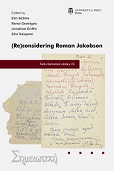Roman Jakobson’s work on semiotics and language
Roman Jakobson’s work on semiotics and language
Author(s): Linda R. WaughSubject(s): Semiotics / Semiology, Theoretical Linguistics, Theory of Literature
Published by: Tartu Ülikooli Kirjastus
Keywords: Roman Jakobson; linguistics; literary theory; semiotics; language;
Summary/Abstract: Many scholars have made connections between work on language (in such fields as linguistics, literary studies, anthropology, psychology, and sociology) and work in the general field of semiotics. But Roman Jakobson, one of the major linguists, literary theorists (poeticians), and semioticians of the 20th century, had a thoroughly semiotic perspective in linguistics and literary theory. Moreover, he was a “major ‘catalyst’ in the contemporary ‘semiotic reaction’” (Eco 1977: 41). This is due to the fact that many of the basic assumptions of modern semiotic research were defined and/or furthered by Jakobson’s work. For him, language is a system of signs used for communication, and thus the study of language (linguistics, broadly defined) is but a subpart of semiotics, the study of any semiotic system. Signification is everywhere; the major principle that unifies sign systems is that they exist for the generation of messages (instances of parole) through which communication takes place. Thus, linguistics is the study of communication by any verbal message and is included in semiotics, the study of communication by any message, which in its turn is part of a larger study of communication, involving social anthropology, sociology, and economics (Jakobson 1971h[1967]). Since some linguistic messages have a poetic (aesthetic) function, poetics, the study of communication by poetic messages, is a subpart of linguistics, which encompasses the study of messages with any function.
Journal: Tartu Semiotics Library
- Issue Year: 2021
- Issue No: 23
- Page Range: 15-32
- Page Count: 18
- Language: English
- Content File-PDF

